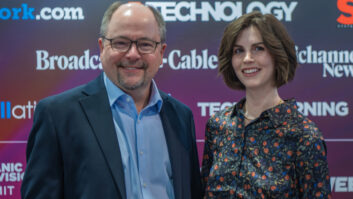P. Harris Morris, previously vice president and general manager of the Media and Workflow area of Harris Corp.’s Broadcast Communications business, recently was appointed president of that division. He succeeds Tim Thorsteinson, who left last fall after three and a half years in the post.
These are excerpts of an interview with our sister publication TV Technology.
What role do you see for the traditional radio broadcast business at Harris?
We’ll have an important role in it, since there is a 7:1 ratio of radio to TV stations worldwide. Most radio stations still transmit in analog, and many will go digital in time; we’ve been in the business since 1922 and understand the patterns in demand worldwide.
It’s also noteworthy that all of our radio (and TV) transmission products are becoming more software-based. That gives us greater synergies and economies of scale, and allows us to deliver great customer value.
Describe the health of your radio manufacturing business. Where do you think growth will come from in coming months?
We’re seeing an uptick in sales leads in the U.S. Globally, stations in major nations that run TV and radio operations simultaneously remain the biggest sources of potential demand for radio.
Harris has cited digital as being an important growth source in both TV and radio. How do you expect your digital radio business to grow?
As the only global supplier of all the digital radio formats (HD Radio, DAB/DMB and DRM) we are seeing movement in the digital radio market around the globe. We have helped broadcasters launch digital services in Europe, Australia and China, and expect continued adoption as those regions make the transition.
In North America, many broadcasters paused to understand the impact of the HD Radio sideband increase; with that issue resolved we [expect] forward movement. This includes the first HD Radio quadcast we pioneered with WJFK(FM) in Washington, which takes advantage of both elevated sidebands and multicast services. We believe others will follow suit and resume deployment of HD.
Harris opened its Mason (Ohio) Broadcast Center to much attention several years ago but has since scaled back the scope of the broadcast manufacturing staff. Is that facility outsized now?
The short answer is that we have three hubs to our business: Denver, Toronto and Mason. There are many more service and sales sites worldwide. Mason will continue to be an important location for Harris Broadcast, in particular for our transmission products and our play-to-air solutions that are helping to drive global growth.
The transmitter is part of an entire workflow that includes encoders, exciters and channel play-out systems. Our goal is to supply interoperable solutions for specific segments of the TV business; these play-to-air solutions are a critical piece.
The past few years have seen challenges for the traditional broadcast business at Harris, as reflected in the company’s financial results and CEO Howard Lance’s comments over time. Describe the outlook now for broadcast, beyond radio.
We still see play-to-air solutions as a significant leg of our global growth. The other pieces are channel creation and play-out; production, especially for sports, news and live content. Another area is distribution, including multi-system operators and satellite.
What adjective would you use to describe the relevance of traditional broadcast within your business, compared to non-radio/TV?
Vital. It’s the lion’s share of our business.













